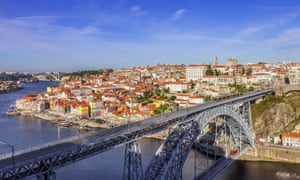 |
| A Parisian’s walkway … the Dom Luís I light railway and pedestrian bridge was built by Gustave Eiffel Photograph: Alamy |
It’s most famous for its ruby tipple and a strident football manager, but Porto is shaking off its fusty image with buzzy places to eat, drink and hang out
It’s spirit that turns table wine into port, spirit that turns crisis into creativity and spirit that allows dignity to flourish among Porto’s glamorous dereliction. Here the Douro river pushes into the cold Atlantic and the city sits on one steep riverbank, with its thrusting towers and opulent city hall, its people defiant of austerity. The past defines much of Porto’s look, but her people have found a way to get on and look forward with hope and panache.
Stunning blue-tiled 14th-century churches and 19th-century palaces lie all but abandoned. There are Meccano bridges designed by Gustave Eiffel. Grand art deco theatres sail like pale liners over the city’s cobbled hills, and great modern buildings rise like phoenixes. There are green parks and shady silent squares, seaside and riverbank, wealth and poverty – and all in a walkable city.
The Baixa district is postcard Porto, rising from the riverbank – all pitched terracotta roofs and stucco painted in shades of mustard, Elastoplast and estuarine grey. At night it glows like honeycomb. Across the river is Vila Nova de Gaia, where 1950s signs on port lodges proclaim old English names – Cockburn’s, Graham’s and Croft.
And there’s the seaside. Empty surf beaches lie a few minutes from the city centre. South of Gaia, the fishing villages are salty and sweary; on the Porto side of the river, Foz do Douro is a posh suburb where the river meets the ocean and, further north, Matosinhos offers rock-cut swimming pools, sunsets and superb fish dinners.
Porto’s life and soul is on her hilly streets, in the many hipster bars and smoky cafes, in portions of tasty food and drinks that are huge and silly-cheap, in a pace of life where a gentle stroll is full speed ahead and a commitment to slow food makes meals lingering and rhythmic.
Getting around the city is a cinch: you stroll, or buy an Andante ticket (€15 for 3 days, stcp.pt) and jump on any bus, metro or train.
What to see
The Casa da Música concert hall (auditorium and backstage visits from €6, performance tickets around €15) is perhaps Dutch architect Rem Koolhaas’ best building. It’s four stops from Metro Trinidade station, a five-star stunner.
The 15th-century Igreja (church) de Santa Clara, on Largo 1 de Dezembro, is impressively ornate. Igreja de São Francisco on Rua Infante Don Henrique is gothic outside and Liberace-baroque within. And if so much ecclesiastical culture (and gilt!) is quite enough for one morning, chill out at Horto das Virtudes, the peaceful park below São António hospital.
Serralves Museum of Contemporary Art (€8.50) is Portugal’s most important modern art museum. The building, filled with light and shade, was designed by local architecture god Siza Vieira (he’s 82 and still working). As well as exhibitions, there’s a cinema, a performance space and a huge, elegant park.
Casa Museu Fernando de Castro (€5, €2.50 concessions, free first Sunday of every month) is a house on a quiet residential street, filled with the wild jackdaw finds of collector, poet and cartoonist Fernando de Castro, from jokey ceramics to 17th-century church panelling.
The Military Museum (€3.50) is where dictator António Salazar’s goons tortured anti-fascists. Five steps away, a disused shopping mall, Centro Comercial Stop(enter at the Gala sign), has been appropriated by Porto’s rock and jazz musicians: each shop is now a rehearsal studio or tiny concert space.
Get a feel for the real Porto on a half-day walking tour from The Worst Tours(“free”, donations welcome). They’re run by three brilliantly provocative activist architects. There’s 70km of cycle track along the river and in town – Porto Rent a Bike has electrics and tandems, too.
Vila Nova de Gaia, or simply Gaia, is on the south side of the Douro and home to the city’s famous port lodges. The best of the tasting tours is at Graham’s (from €8, Rua Rei Ramiro 514, +351 223 776 484) and its in-lodge Vinum restaurant is very good, too. Niepoort (Rua Cândida dos Reis 598 +351 223 777 777) doesn’t do tourist tours but visits on request are sometimes possible if you ask nicely – the emphasis is on its excellent table wines as well as port.
An hour’s walk (or 10-minute cycle) along the riverside boardwalk towards the Atlantic is Afurada, an entirely authentic fishing village. Eat perfectly grilled fish and listen to the salty backchat at Taberna do São Pedro (Rua Costa Goodolfim 42, +351 220 993 883). There’s an ad hoc ferry service across to Porto, and regular buses, too.
Eat and drink
There’s great eating and drinking all over Porto. Starting east of Porto’s centre,Maus Hábitos (Rua Passos Manuel 178, 4th floor, +351 222 087 268), which means bad habits, is a hip space on the roof of an art deco car park. The restaurant serves brunches, lunches (€5 and up), dinners and great pizza, such as the Nan Goldin, which is topped with artisan smoked bacon and confit onions. There are regular exhibitions and talks, plus nightly DJs playing everything from shoegazers to jazz funk. A few doors away at number 137, Passos Manuel (+351 222 058 351) is an art cinema and bar.
South on Muralha Fernandina (the eastern city wall above the Eiffel bridge) is community-run Guindalense Futebol Clube (+351 222 034 426), a convivial, welcoming cafe-bar. Posh it’s not. But its terrace offers the city’s most jaw-dropping views, and beers and coffees cost around 50 cents a throw. Food is simple and sturdy: a full-on francesinha (Porto’s massive doorstep sandwich, layered with a pork, smoked sausage, bacon and a medium rare steak, topped with an egg and a thick overcoat of cheese), hot dog or burger is around €6. There are occasional fado music nights; book ahead for carnival nights and New Year’s Eve fireworks.
O Buraco (Rua do Bolhão 95, +351 222 006 717) is fun, reliable and offers “food like grandma used to make”, such as frango pica no chão cabidela (chicken-and-rice stew with chicken blood). Her grandkids must have had huge appetites.
South of São Bento railway station (with its stunning azulejo tile panels), Cantina 32 (Rua das Flores 32, +351 222 039 069) is a friendly, attractive place with appealing options for vegetarians. A few doors downhill, Mercearia das Flores(Rua das Flores 110, +351 222 083 232) is a deli crammed with local products and wines whose kitchen produces very good brunches, salads and sandwiches.
On the roof of posh mini-mall Passeio dos Clérigos is BASE (+351 910 076 920), Porto’s coolest hangout: open from 10am to 2am, it offers a full menu from the restaurant below, plus sunloungers, jute coffee beanbags beneath olive trees, beautiful people, fresh juices (€3), sushi (€11) and rocket-y sandwiches (from €6). It’s closed in cool or wet weather.
Don’t miss Miss’Opo (Rua das Caldeireros 100, +351 222 082 179), a buzzy restaurant, exhibition space, guesthouse and shop. A meal of small plates likesalada bonita (pretty salad), grilled swordfish, umami mushrooms, good bread and sausage plus wine costs around €20 a head.
Beardy and hip, Café Candelabro (Rua da Conceição 3) is a bar with simple snacks plus a bookshop – specialising in offbeat cinema, photography, theatre and art – in one cool, small space. The barman has a heavy hand (cocktails from €4) and a DJ crouches in the corner most nights.
For fine dining at casual cost, Traça (Largo São Domingos 88, +351 222 081 065) serves slow food with an emphasis on game and old regional recipes. Dance your dinner off at Pipa Velha (Rua das Oliveiras 75, +351 223 222 780), which started the trend for cool downtown bars; it has excellent drinks, sturdy snacks and is open until 4am.
Towards the trendy area around Rua Miguel Bombarda, I love Casa de Ló(Travessa de Cedofeita 20A, +351 914 900 409), a former bakery reimagined as a bar and garden that puts on unplugged concerts and nightly DJ sets. Also recommended is Casa Santo António (Rua da Assunção 40, +351 938 704 632), a “gourmet tasca” with a friendly vibe and great regional ingredients – try alheira, a smoked chicken or game sausage.
In Foz, upscale-ish Bar Tolo (Rua Senhora da Luz 185) offers everything frompetiscos (bar snacks) to full meals. Round the corner, Bite Me (Rua do Teatro 133) is a fine brunch spot above the Espaço 7 Trendstore.
For one of Portugal’s finest meals, head out to Restaurante Boa Nova (Avenida da Liberdade +351 229 940 066) in Matosinhos, north of Foz. This rocktop beauty is a restored 1950s tea house built by local architect Alváro Siza Vieira, just up from the incredible swimming pools the architect cut into the raw rock. Delicious, modern food is served with élan in a sublimely poetic setting.
Porto is in love with ice-cream just now. The best is at Gelataria Sincelo (Rua de Ceuta 54), which uses fresh ingredients from the nearby Bolhão market. Uncool, and to be avoided, is the famous Café Majestic; though campily pretty, it’s pricey and rammed with tourists and their selfie sticks. Equally, the Ribeira – riverside – district is prime tourist territory, a sort of pseudo-Porto.
Shopping
Mercado do Bolhão, the colourful market that sells everything, has the best fruit and veg, plus excellent charcuteries and butchers, a couple of lunch spots (try Cafe D) and three tea towel sellers. The surrounding streets have plenty of delis, too.
A Vida Portuguesa (Rua Galeria de Paris 20, 1st floor) is a glamorous old department store that carries the best and most attractive Portuguese foods and handicrafts.
At Lobo Taste (Largo de São Domingos 20), local star designer Paulo Lobo employs local artisans to groove up traditional designs for blankets, baskets and other desirable craftware. Coração Alecrim (Travessa de Cedofeita 28) sells pretty eco, indie and vintage clothes and homewares. Mercado 48 (Rua da Conceição 48) has vintage rosewood furniture, craft ceramics and nice knick-knacks. Fresh and exciting is Scar.ID (Rua do Rosário 253), a treasure trove of young Portuguese jewellery, ceramics, furniture and clothing.
Livraria Lello (Rua das Carmelitas 144k) is a bookshop in an incredible art nouveau building. Its interior is usually rammed with visitors snapping the amazing surroundings, so it now charges €3 to get in (redeemable against a purchase).
Where to sleep
There’s a fine pousada, Pestana Palacio de Freixo (doubles from €197 B&B) on the river, away from the Ribeira crowds, for those wanting some luxury wind-down time. In the centre, Flores Village (doubles from €145 B&B, ) is a grand, newly renovated townhouse hotel plus serviced apartments, and a well-equipped spa.
Or plug into Porto’s energetic new alternative scene in a clutch of charming, affordable, boutique B&Bs. Just down from Flores Village is Casa dos Lóios(doubles from €95 B&B), two adjoining boutique guesthouses. Porto Vintage Guest House (doubles from €75 B&B, ) is new for 2015, in the thick of trendy things on Almada. The White Box (doubles from €50) has five cool rooms for lovers of clean lines on busy Santa Caterina, while quieter Rosa et Al (doubles from €118 B&B) is a charming six-room townhouse near Rua Miguel Bombarda that holds art and food events and has a visiting spa service. For a budget stay, try the excellent Gallery Hostel (dorm beds from €22 B&B, doubles from €64 B&B), with its laundry, kitchen and film nights.
For a self-catering stay in Foz do Douro, it would be hard to beat 4 Rooms(doubles from €115 self-catering). It was designed by Pritzker prize-winning architect Eduardo Souto de Moura (of Braga football stadium fame).
• Flights were provided by easyJet (easyjet.com), which flies to Porto from Bristol, Gatwick, Luton and Manchester from £52 return including taxes. Accommodation was provided by the Porto tourist board. Sunvil (020-8758 4722, sunvil.co.uk) offers four nights’ B&B at the Pestana Porto from £499pp (two sharing), including flights from Gatwick, or from £517pp with car hire
By Kevin Gould, www.theguardian.com
Follow us on Twitter: @TraveloreReport
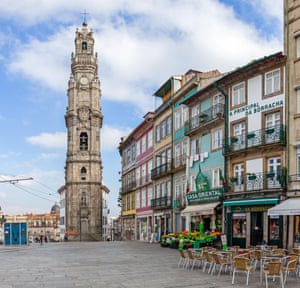
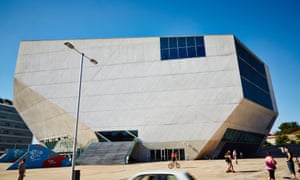
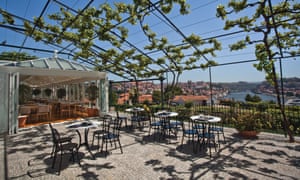
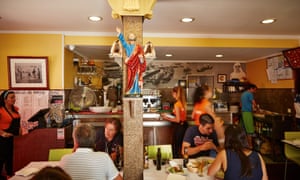
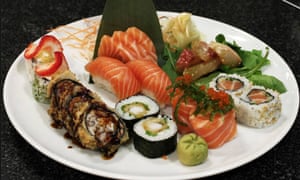
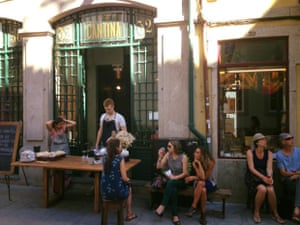
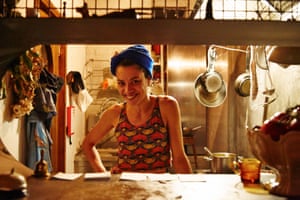


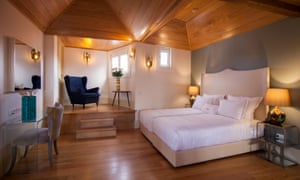
No comments:
Post a Comment